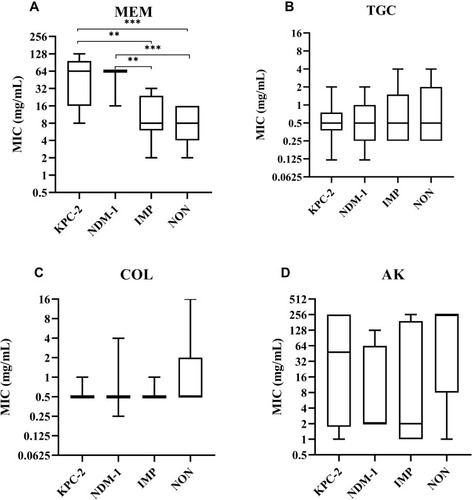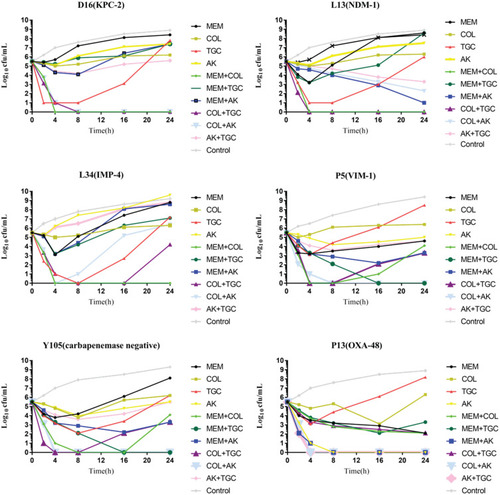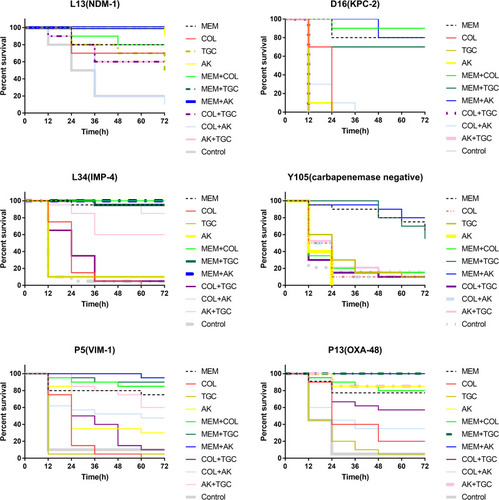Figures & data
Figure 1 The difference in MIC values between different types of carbapenemase. (A) Meropenem (MEM); (B) tigecycline (TGC); (C) colistin (COL); (D) amikacin (AK).

Table 1 Isolates Used in the Time–Kill Assay and G. mellonella Survival Assay
Table 2 Susceptibility of 58 Clinical CRKps to Four Antimicrobial Agents
Table 3 In vitro Combination Effect of Different Regimens Against CRKps with Different Resistance Mechanisms Using the Checkerboard Assay


